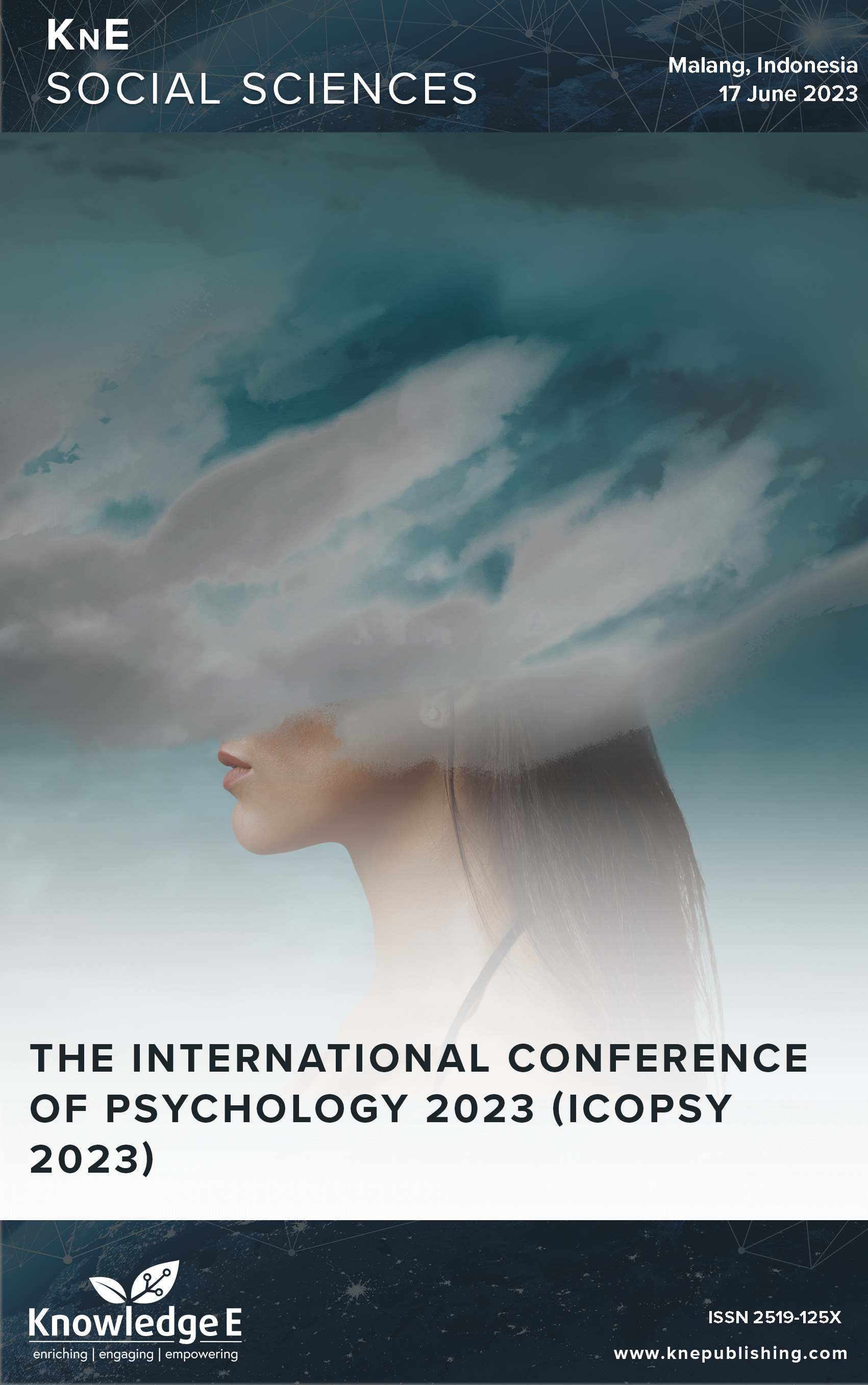Resilience Dynamics of Disability People in the Workplace
DOI:
https://doi.org/10.18502/kss.v8i19.14374Abstract
The physical limitations of people with disabilities who work need resilience skills to survive and adapt at work. This study aimed to determine demands, resilience, and social support for disabled persons in the workplace. This study used a qualitative method with a case study approach. The participants were two physically disabled men who worked at the Warehouse division. Data collection was conducted through in-depth interviews. The study results showed that their work demanded a lot of loading of things that needed to be lifted, high stacking, and increased work if colleagues did not enter shifts. The resilience of disabled people in the workplace is emotion regulation, impulse control, empathy, optimism, causal analysis, self-efficacy, reaching out, and adaptability. Participants demonstrated fairly good resilience skills while at work. This is due to internal factors, including disabled people who have accepted their conditions, have a high sense of gratitude, and are hardworking. External factors included being the breadwinner of the family, difficulty in getting a job, the salary, and there is some social support from family, co-workers, superiors, and the company.
Keywords: Disabled People, Resilience, Working
References
[2] Machdan DM, Hartini N. The relationship between self-acceptance and anxiety about facing the world of work in the disabled at UPT Social Rehabilitation of Disability Pasuruan. Journal of Clinical Psychology and Mental Health. 2012;1(2):79–85.
[3] Effendi AB, Yunianto R. Implementation of Diversity Program for Workers with Disabilities at Pt. Wangta Agung Surabaya City. IJDS: Indonesian Journal of Disability Studies. 2017;4(2):6–103.
[4] Kementrian Kesehatan Republik Indonesia. Data Center and Information (PUSDATIN). https://www.kemkes.go.id/article/view/13010200017/downloadpusdatin- profil-kesehatan-indonesia-2010.html
[5] Adelina F, Akhmad SK, Hadi C. How can people with disabilities be able to become happy individuals? Journal of Psychological Science. 2018;7(2):119–25.
[6] Humas B. MOSA encourages accessibility of disability-friendly information. Public Relations Bureau of the Ministry of Social Affairs of the Republic of Indonesia (Online). 2020. https://kemensos.go.id/kemensos-dorong-aksesibilitas-informasiramah- penyandang disabilitas, accessed April 16, 2022).
[7] Lukas T, Menayang AP, Marta RF. The role of Alfamidi Company builds disability confidence in the world of work. J Prof Commun. 2021;5(1):57–65.
[8] Abiyoga MI, Sawitri DR. “Steadfast in My Shortcomings” A Qualitative Study of Hardiness in Working Disabled Middle Adult Individuals. Empathy. 2018;6(4):25–32.
[9] Sayyidah AN. Dynamics of Adjustment of People with Disabilities in the Workplace of Work Internships: A Descriptive Study at the Integrated Rehabilitation Center for Persons with Disabilities (BRTPD) Yogyakarta. Inclusions. 2015;2(1):63–86.
[10] Senra H, Oliveira RA, Leal I, Vieira C. Beyond the body image: a qualitative study on how adults experience lower limb amputation. Clin Rehabil. 2012 Feb;26(2):180–91.
[11] Reivich K, Shatte A. The Resilience Factor: 7 Keys to Finding Your Inner Strength and Overcoming Life’s Hurdles. New York: Broadways Books; 2003.
[12] Masten AS. Ordinary Magic: Resilience. Development. New York: The Guilford Press; 2014.
[13] Dewi MH, Suwarti S. Description of Resilience in Working Non-Innate Disabled Men. Psisula: Periodic Proceedings of Psychology. 2019;1(September):116–28.
[14] Farkas D, Orosz G. Ego-resiliency reloaded: a three-component model of general resiliency. PLoS One. 2015 Mar;10(3):e0120883.
[15] Richardson GE. The metatheory of resilience and resiliency. J Clin Psychol. 2002 Mar;58(3):307–21.
[16] Luthar SS. Resilience and Vulnerability, Adaptation in the Context of Childhood Adversities. New York: Cambridge University Press; https://doi.org/10.1017/CBO9780511615788.
[17] Liwanto I, Kurniawan A. Psycap’s relationship with the performance of PT. X Bandung. Maranatha Journal of Management. 2015;14(2):223–44.
[18] Hendriani W. Psychological resilience: an introduction. Jakarta: Prenadamedia Group; 2018.
[19] Pratiwi I, Hartosujono. Resilience in people with non-congenital disabilities. SPIRITS Journal. 2015;5(1):48– https://doi.org/10.30738/spirits.v5i1.1057.
[20] Law of the Republic of Indonesia Number 8 of 2016 concerning Persons with Disabilities. JDIH BPK RI. 2016.
[21] Halimah M, Solfarina, Langitasari I. Improvement of multiplication learning outcomes through the use of abacus in grade IV students with disabilities at Sdlb Pri Pekalongan. Journal of Teaching Professions. 2019;5(1):15–22.
[22] Heriyanto H. Thematic Analysis as a Method of Analyzing Data for Qualitative Research. Anuva. 2018;2(3):317–24.
[23] Sugiyono. Metode Penelitian Kuantitatif, Kualitatif, dan R&D. Bandung: Alfabeta. 2013.
[24] Gross JJ. Handbook of Emotion Regulation. New York: The Guilford Press; 2007.
[25] Rosalina TA, Apsari NC. Social support for people with visual disabilities in achieving achievements in extraordinary schools. Proceedings of Research and Community Service. 2020;7(2):414–24.

